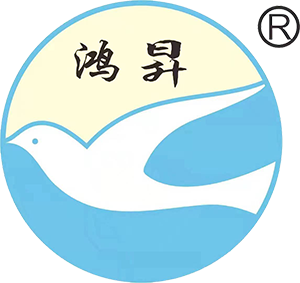Economic Factors and Copper Oxide Pricing
The pricing of copper oxide, a derivative of copper, is intrinsically linked to global economic conditions. As a primary industrial raw material, copper and its derivatives like copper oxide see demand directly tied to economic growth. During periods of economic expansion, industrial activity increases, resulting in a spike in the demand for copper-based materials, thereby driving prices up. Conversely, during economic downturns, the reduced industrial activity results in lower demand and a subsequent drop in prices.
Influence of Global Economic Growth
Global GDP growth is a significant indicator impacting Copper Oxide Prices. According to data from the International Monetary Fund, a 1% increase in global GDP can lead to a 2% increase in demand for industrial metals, including copper oxide. Various industries, such as electronics and construction, are heavy users of copper oxide, and these industries' growth directly influences the demand and prices in the wholesale market.
Import and Export Policies Impact
Government trade policies are potent factors affecting copper oxide prices. Tariffs, quotas, and export restrictions can significantly alter the cost structure for manufacturers and wholesalers engaged in the international trade of copper oxide. These policies affect the landed cost of raw materials and finished goods, thus influencing market prices.
Tariff Policies and Market Dynamics
Tariff policies can either serve to protect domestic industries or encourage international trade competitiveness. For instance, a newly imposed tariff of 5% on copper oxide imports can increase manufacturing costs by an equivalent margin, influencing the price that factories and wholesale distributors charge downstream consumers.
Copper Oxide Consumption Trends
The consumption pattern of copper oxide has evolved significantly, impacting its market price. Emerging applications in fields like electronics, medicine, and environmental technology have broadened its use, influencing overall demand.
Sectoral Demand and Price Impact
The electronics sector, which uses copper oxide in high-frequency circuits and advanced components, is a major consumer. This sector's technological advancements and increased product sophistication drive up demand, thereby affecting copper oxide's price on the wholesale market. Studies show this sector accounts for approximately 35% of the total copper oxide consumption globally, with an annual growth in demand of around 7%.
Production Costs and Copper Oxide Valuation
The cost of producing copper oxide is primarily influenced by raw material prices, energy costs, and technological infrastructure deployed in manufacturing processes. These factors collectively influence the final market price offered by manufacturers and factories.
Raw Material Costs and Energy Prices
Raw material costs, especially those related to mining and refining, have a substantial impact on copper oxide prices. A 10% rise in energy costs can increase production costs by up to 3%, directly affecting the price at which manufacturers can afford to sell their products.
Investment and Fund Dynamics
Investment strategies and fund activities in commodities markets have a significant impact on copper oxide prices. Commodity funds that invest in metals can drive up prices through speculative purchasing.
Commodities Funds and Market Influence
Between 2015 and 2020, fund investments in copper and related derivatives grew by 15%, with a noticeable impact on the copper oxide price trend. Such investments entice manufacturers to adopt strategic price adjustments to capitalize on favorable market conditions.
Exchange Rate Fluctuations
Exchange rates influence the purchasing power of countries involved in the copper oxide trade. Fluctuations can lead to varying copper oxide prices in different regions.
Currency Valuation and International Trade
A depreciation of the U.S. dollar, for instance, could lead to a 5% rise in copper oxide prices domestically, as international buyers find it cheaper to purchase exports, driving demand.
Industrial Impact of Rising Copper Prices
Rising copper prices affect various industries, with significant implications for manufacturers and wholesale distributors of copper oxide.
Impact on Cable Manufacturing
The cable manufacturing industry, a significant consumer of copper oxide, faces increased costs due to rising copper prices. This cost increase is often passed down to wholesalers and end consumers, who may see price increases of up to 10% on products.
Copper Oxide Market Segmentation
The copper oxide market is segmented by purity level and application, which significantly influences pricing strategies adopted by manufacturers and wholesalers.
Purity Levels and Application Impact
Higher purity levels (>99%) are in greater demand for applications in electronics and catalysis, commanding a premium price. Approximately 50% of copper oxide production falls into this category, highlighting its significant impact on overall market pricing.
Copper Oxide in Nanotechnology
Nanotechnology applications of copper oxide are on the rise, influencing its market dynamics and driving demand across various sectors, including healthcare and energy.
Technological Innovations and Market Growth
The nanotechnology sector is expected to grow at a CAGR of 8.9% from 2026 to 2033, with copper oxide playing a crucial role in new technologies like 5G and IoT. This growth drives up prices as manufacturers and factories strive to keep up with rising demand.
Long-term Copper Price Projections
Long-term projections for copper prices provide an indication of the future direction of copper oxide prices, essential for planning by manufacturers and wholesale distributors.
Future Market Trends and Pricing Strategy
Analysts predict a continued upward pressure on copper prices due to industrialization and increased consumption in the Asia-Pacific region. This trend compels manufacturers to reevaluate pricing strategies to maintain competitive advantage while addressing factory production costs.
Hongyuan New Materials Provide Solutions
Hongyuan New Materials offers comprehensive solutions to navigate the complex landscape of copper oxide pricing. By leveraging advanced forecasting models and strategic procurement practices, manufacturers and wholesalers can optimize their supply chains to mitigate price volatility. Hongyuan's initiatives like hedging against commodity price fluctuations and investing in alternate sourcing strategies ensure stability and cost-effectiveness. Additionally, they provide consultancy services focusing on production efficiency and market entry strategies, enabling factories to maintain competitive pricing and capitalize on emerging opportunities. These solutions position Hongyuan as a leader in addressing industry challenges sustainably.

Post time: 2025-10-04 22:03:02




